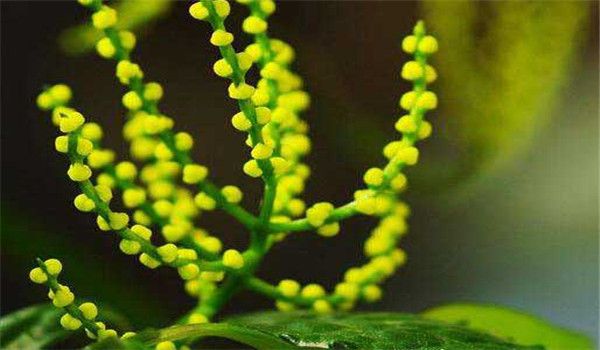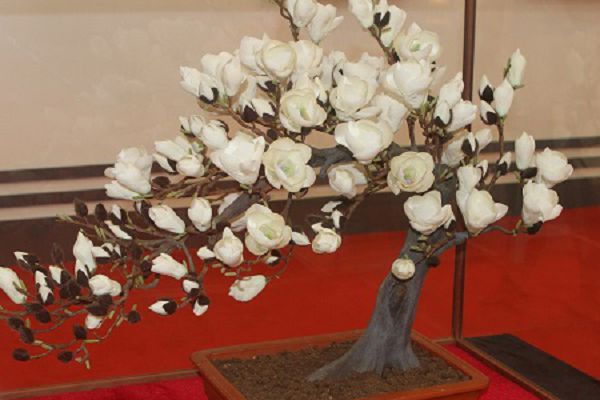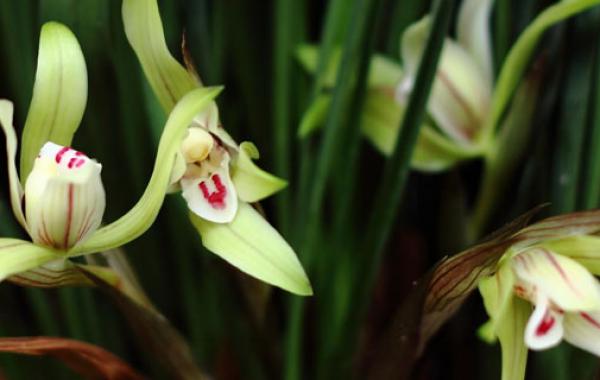A brief introduction to the Culture methods of Pearl Orchid

Magnolia is also known as golden millet orchid, pearl orchid, tea orchid and so on. The pearl orchid is small and yellow, looks like millet and grows densely on the branchlets. Pearl orchid is an important raw material for scenting scented tea. Let's take a look at the culture method of pearl orchid.
Magnolia is native to the tropics and subtropics of South China and likes warm, humid, shady environment and fertile sandy loam. Afraid of heat and cold. You can use flowerpots to breed magnolia. The methods include cutting method, divided plant method and strip pressing method.
First, cutting method. Usually at the end of August, when the harvest of autumn flowers is over, strong old branches or one-to two-year-old branches are cut, which are about seven or eight inches long, and the leaves at the bottom of the branches are removed, leaving only two or three pairs of leaves at the top as cuttings. Before cutting, use sand and fertile soil to make culture soil according to 40% sand and 60% soil. When cutting, first put about half an inch of sand at the bottom of the basin, and then tie the cuttings four or five into a bunch, which are evenly distributed in the basin. The lower part of the rhizome of the cuttings should be inserted into the bottom of the basin, and then filled with culture soil. Don't fill the soil too full, just one and a half inches from the mouth of the basin. Water it for the last time. Do not fill the pot soil before cutting, because the rhizome of Magnolia is very fragile and tender, and the stem nodes are easy to hurt, causing the roots to rot.
Second, the method of dividing roots. Magnolia is fleshy root, whisker root is less. This method is mostly used for old trees that grow too densely. In general, when the spring flowerpot is removed from the outside, it will split in 10-15 days. When ramet, pour the old tree out of the basin, cut the old tree into three or four pieces with a knife, and plant it in the new pot. Pay attention to watering and shading, and new plants can be formed soon.
Third, the strip pressing method. This method is mostly used to cultivate pearl orchid in a large vat. If the growth is thick and uneven, or if there is a partial lack of seedlings due to diseases and insects, press the thick branches into the scarce place and bury them in the soil for about two inches, so that the top of the pressed branches will show the surface of the soil, and new roots will soon grow. The branches can also be buried in another flowerpot and can be cut off from the mother plant in two or three months to form a new plant.
The management of Magnolia mainly mastered watering, fertilization, shading and sunscreen, cold and winter protection.
The pearl orchid should be watered less first and then more. After Grain Rain, Zhulan moved outdoors. Because of the low temperature in early spring, it could be watered once a day and thoroughly. With the increase in temperature, in the summer when flowers and branches are growing vigorously, water is watered twice a day to keep the basin soil moist. If it is found that the top leaflet is yellow, the lower old leaves fall off, this is too much watering, it is necessary to stop watering, make the soil dry, and promote the root system to resume normal growth. Pearl orchid likes to be wet, but do not accumulate water in the basin, otherwise it is easy to rot the roots. After the autumn is cool, the temperature is getting lower and lower, and the frequency of watering is gradually reduced.
The fertilization of pearl orchid should be dilute first and then thick. Pour rotten thin human dung water at the beginning of spring. With the increase of temperature and the germination of flower buds, the concentration of fertilization can be gradually increased. After fertilization, flowers must be dewy, so as not to cause defoliation and rotting roots. Irrigate fertilizer water, generally below 28 ℃, if the temperature is too high, do not dung. After the middle of August, do not apply manure fertilizer and water, otherwise it will cause overgrowth and germination of new twigs, which is not conducive to cold resistance in winter.
After the pearl orchid is moved to the outside, it is necessary to build a shade to protect it from the sun, so that the pearl orchid is cool and ventilated with sparse sunlight. After the late frost period, let Zhulan fully accept dew at night.
The pearl orchid is weak in cold resistance and usually suffers frost damage at zero degrees Celsius. It is necessary to move the flowerpot indoors for the winter before Frosts Descent.
Before entering the house, the flowerpot should be trimmed once to remove the dead branches and old leaves. As the branches of Magnolia are weak, it is necessary to build a cylindrical support on the edge of the basin and tie the branches of Magnolia evenly to the support to form a hollow state. In this way, it is beneficial to ventilation and light transmission and the germination of new branches.
The flowering period of Magnolia is relatively long, which can last 80-90 days from May. The pearl orchid can harvest a small amount of orchids in one or two years. Pearl orchids are generally divided into spring flowers, summer flowers and autumn flowers. The aroma of flowers is easy to be lost when exposed to high temperature or hot sun, so it should be picked in the morning. Because the pearl orchid is very small, it should be picked together with the pedicel, leaving the pedicel about half an inch.
Related
- Is the orchid suitable for indoor use? Is it good for the body?
- How to prevent the empty root of orchids?
- What to do after the crab claw orchid is withered?
- Why are the leaves of orchids always yellow? Fertilizing and watering.
- Can the root of the gentleman orchid be saved if it is rotten?
- Diagnosis and treatment of cotton-blowing beetle insects in Cymbidium
- There is a way for a gentleman's orchid to rot.
- What is the most suitable temperature and humidity for the orchid?
- How to raise a gentleman's orchid? Cultivation techniques of Cymbidium
- How to prepare the nutritive soil for the cultivation of Cymbidium



